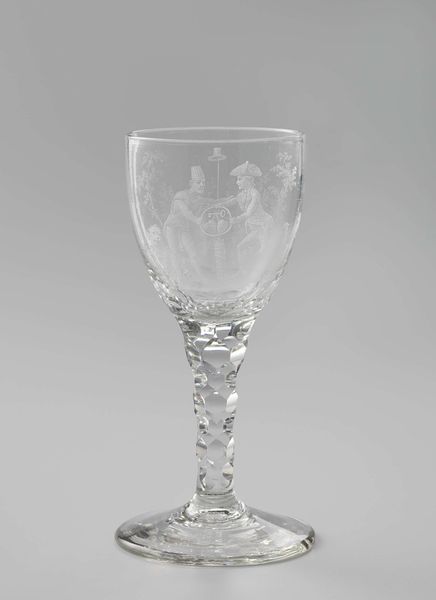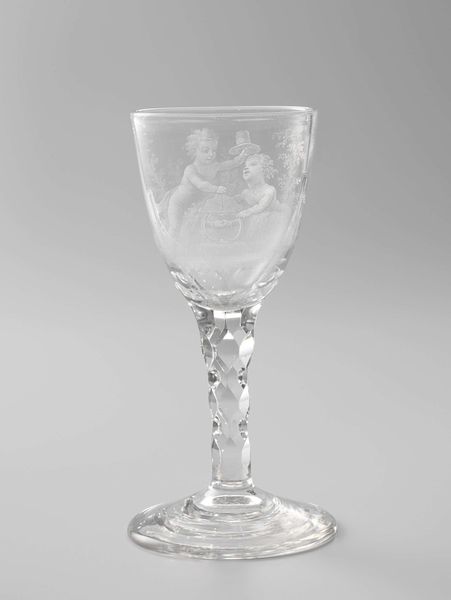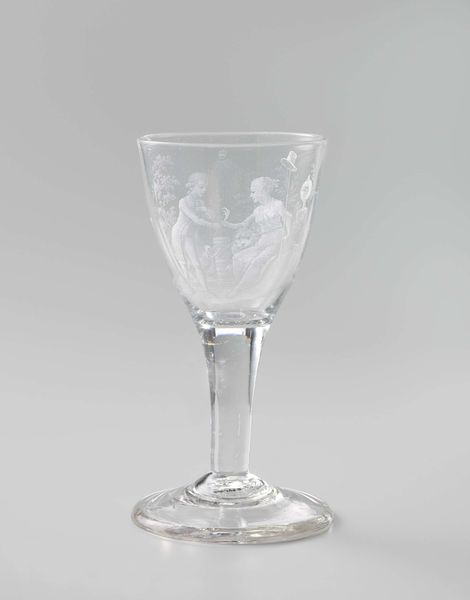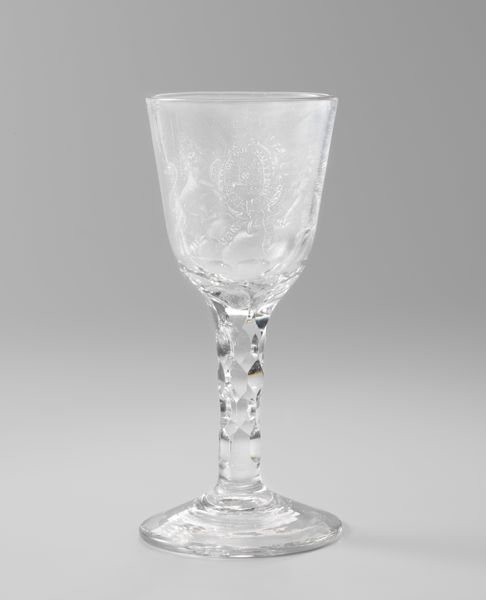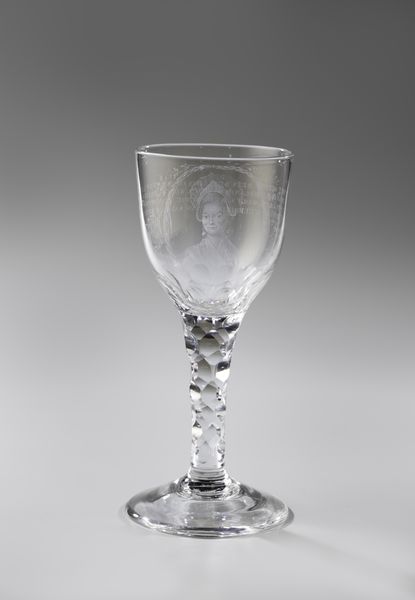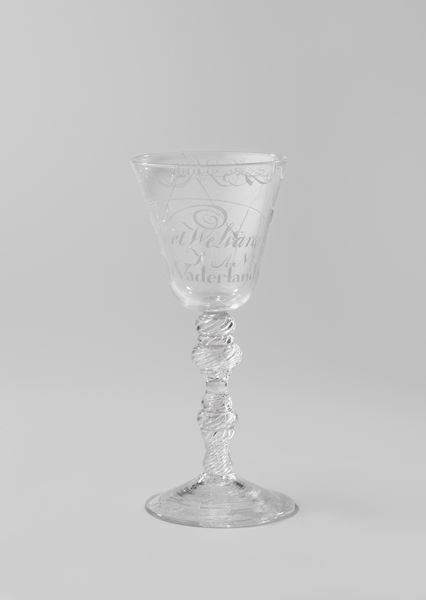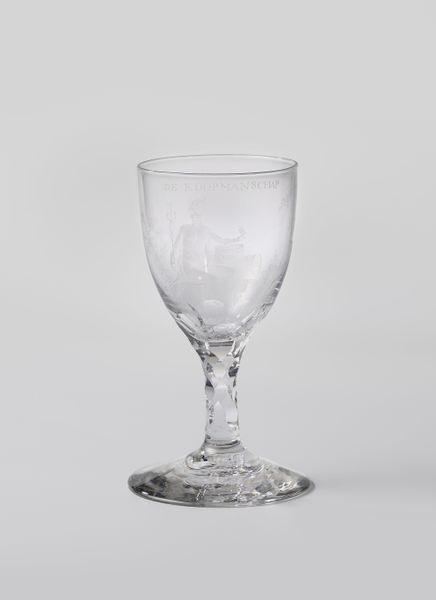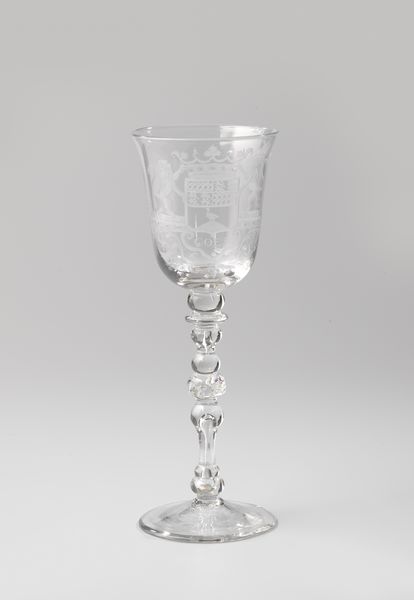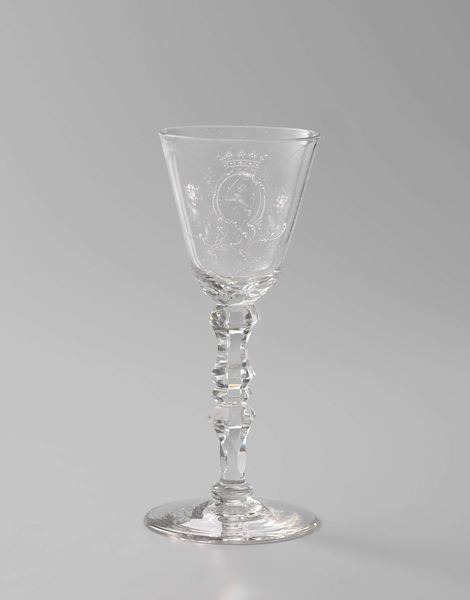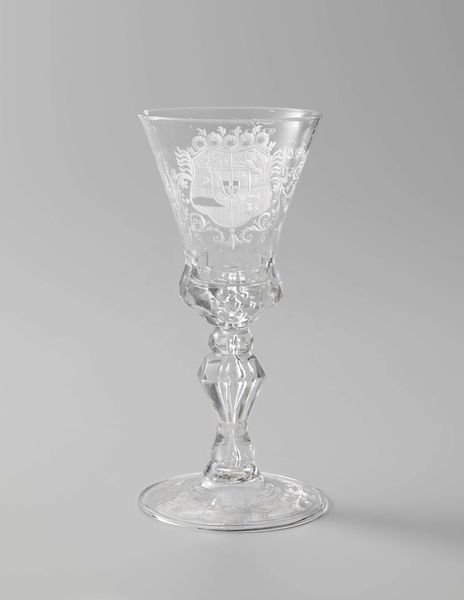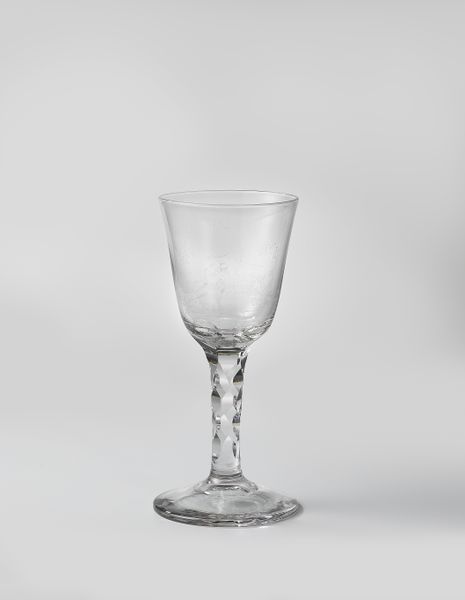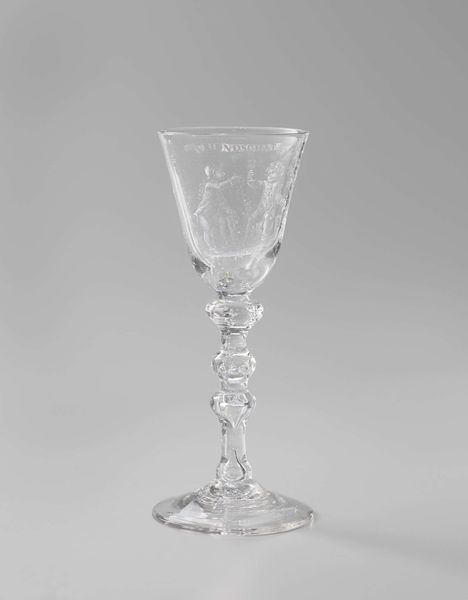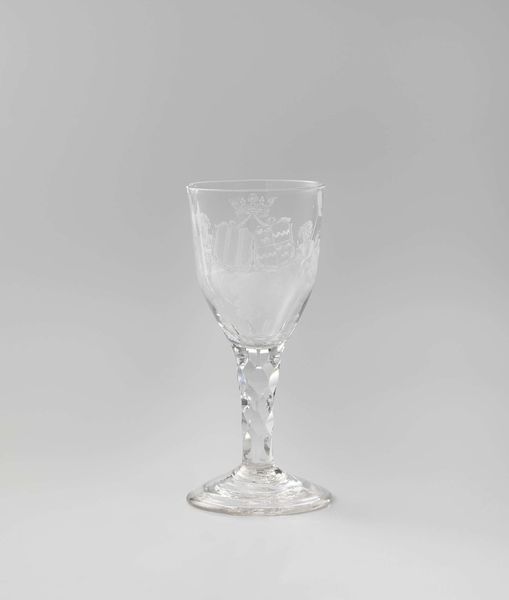
glass, engraving
#
portrait
#
dutch-golden-age
#
glass
#
genre-painting
#
engraving
Dimensions: height 15.4 cm, diameter 8.1 cm, diameter 8.1 cm
Copyright: Rijks Museum: Open Domain
Curator: Isn't it fascinating? This is a wine glass etched with a portrait of Johan van Oldenbarnevelt, and though made before 1798, it speaks volumes about historical memory. Editor: Gosh, it's subtle. My first thought is, whoever drank from that must have felt pretty important. Like toasting with a tiny ghost from history. Curator: Precisely. The glass is Dutch Golden Age style, combining a functional object with a genre painting theme in a miniature portrait format. Van Oldenbarnevelt, a key figure in Dutch history, is practically a permanent dinner guest. Editor: He has that stern, judging gaze down pat, doesn't he? I mean, imagine using that every evening! Would you feel honored or scrutinized? I guess it depends on the wine. Curator: Symbolically, the engraving ensures Van Oldenbarnevelt's legacy persists in everyday life. He becomes a silent participant at gatherings, his image subtly reminding drinkers of his impact. It uses his imagery to secure him in history. Editor: A very upper-crust version of a memorial tattoo, if you ask me. It makes you think, though, about who *we* immortalize, and *how*. Will our portraits end up on glassware centuries from now? Curator: Well, cultural memory is like that. It seeps into the ordinary. This engraved glass is such an intimate way of maintaining continuity with the past and also serves as evidence of cultural ideals during the Dutch golden age. Editor: Yeah. Suddenly I’m craving a deep dive into 17th-century Dutch politics… or maybe just a very large glass of wine. I see those two sprigs of laurel leaves on either side of the portrait. A symbol for someone who's accomplished? Curator: Indeed, those represent the figure's prominence in the region during this time period and his ultimate success. The artwork encapsulates much in the simplicity of a timeless historical figure engraved on delicate glass. Editor: You're right. Something so simple speaks to legacy in such a unique, understated way. Thanks for pointing that out!
